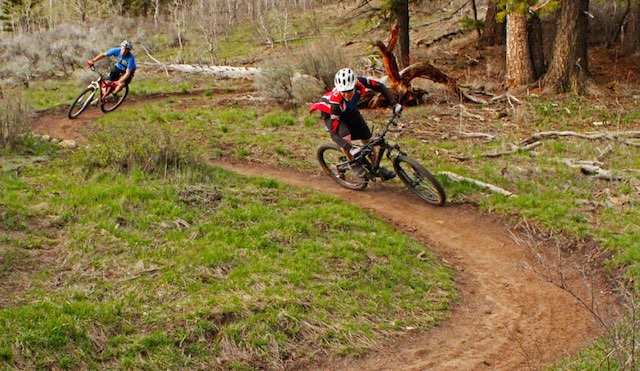 Above all, be patient, be honest, and bring your old bike into the shop when you're wondering what the next bike should look like. Ryan Dunfee photo.
Above all, be patient, be honest, and bring your old bike into the shop when you're wondering what the next bike should look like. Ryan Dunfee photo.
Without recommending a brand or a wheel size or a travel length or a price point, we'll reveal the right questions to ask to lock onto the best bike for you. We’ll also reveal where to ask those questions so you can get the best answers. Knowing yourself and your goals is the best way to score an awesome ride for local terrain and the type of riding you do.
We've pulled together a group of industry experts, marketers, shop mechanics and bike designers from around the country to help with this article.
RELATED: saving money on mountain biking
First, let’s quickly cover the different travel lengths and wheel sizes and the relative strengths in those differences. Use this info to understand what might work for your area and your style of riding to build a jumping-off point for a discussion with a shop.
These are thumbnail generalizations and yes, they can be subjective, so back away from the keyboard; nobody needs to know how smart you are.
The Different Types of Mountain Bikes
Cross Country: Hardtail or 80-115mm travel full suspension with ‘steeper’ geometry.

Cannondale's F29 cross-country hardtail is primed for climbing speed.
These bikes are designed for faster pace, they’re light and great at climbing. They are the ones your buddies pick up in the parking lot with one hand to marvel at its insignificant weight. Of course, very rough terrain is hard on these bikes. The front wheel is usually tight under the handlebars, and with that nimbleness comes the possibility of going over the bars if you make a mistake on a fast descent.
Trail: 120-135mm of travel with ‘balanced’ geometry.
 BMC's Speedfox has 130 mm of suspension and is designed to go all over the place, but still climb very well.
BMC's Speedfox has 130 mm of suspension and is designed to go all over the place, but still climb very well.
These are very versatile ‘do it all’ sweet-spot bikes that climb and descend well. They should still be pretty light. Front end geometry is slightly longer than an XC bike. Trail bikes feel very good when you first ride them.
All-Mountain: 140-155mm travel with ‘balanced/slack’ geometry.
 GT's Force has 150 mm of suspension, a 67 degree head angle and is slightly more skewed towards the descent.
GT's Force has 150 mm of suspension, a 67 degree head angle and is slightly more skewed towards the descent.
These also do well on most terrain, are expected to handle climbing decently, but skew a little more to descending. Choices between Trail and All Mountain usually come down to how rough your regional trails are or personal preferences. If you love the down, but typically score your downhills in the mix of a longer cross-country ride, you'll prefer this over a burlier enduro bike.
Enduro: 160-170mm travel with slacker geometry.
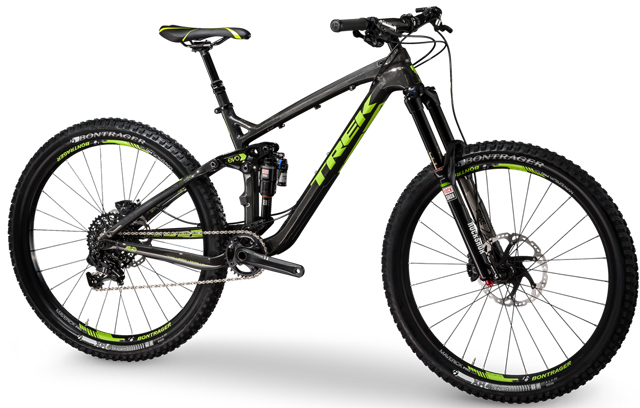 Trek's Slash is a burly machine that is designed to be able to pedal (slowly) to the top of your fastest, most technical trails, and take a beating on the way down.
Trek's Slash is a burly machine that is designed to be able to pedal (slowly) to the top of your fastest, most technical trails, and take a beating on the way down.
Traditionally part of the beefier end of the All-Mountain category, but some manufacturers are now specializing Enduro bikes as longer travel rigs with more descending technology based on enduro racing needs. Heavier and tougher to climb than the lighter categories, but shine in the fast and rough stuff. If you're spinning up mellow logging roads to access blazing fast, gnarly downhills, this is your kind of ride. An increasing number are built so long and slack that they only come alive above a certain speed, so keep that in mind.
Freeride/DH: 200mm travel. Man-plow. Goes over everything.
 GT's Fury downhill bike. There's no question what this thing's intended to do.
GT's Fury downhill bike. There's no question what this thing's intended to do.
Use only if your version of climbing involves the back of a pickup truck or the seat of a chairlift, and you're wearing a full-face on every trail you ride.
Geometry

Terms like ‘slack’, ‘steep’, and ‘balanced’ refer to a few different configurations of a bike’s tubing length and frame angle measurements.
As you shop, there are wo things worth knowing here:
For head and seat tube angles: (ha & sa in the illustration above) lower head angle numbers, like 65 degrees, are considered ‘slack’ and higher numbers, like 72 degrees, are considered ‘steep’. Slack is found in more DH/enduro/all-mountain rides, and steep in XC and trail bikes - though current trends have slack angles trickling down into all types of bikes.
For chainstays and wheelbase: (rc & wb above) Longer chainstays, like over 17.5 inches, means a bike is more stable at speed. Shorter ones generally mean a bike is more maneuverable. Makes sense, right? Shorter chainstays and wheelbase are currently in vogue, especially as manufacturers try to make 29” wheeled bikes more maneuverable.
Wheel sizes
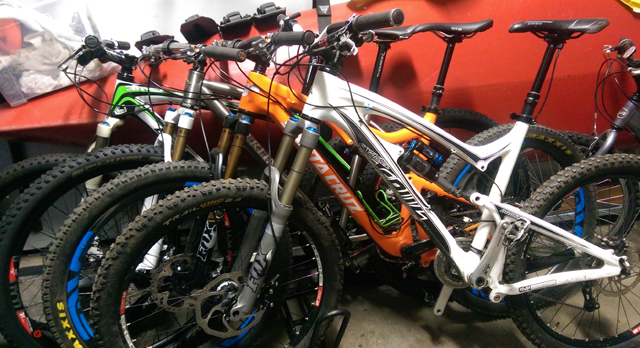 R=D-1 when R=the right number of bikes and D=the number of bikes for which your significant other leaves you
R=D-1 when R=the right number of bikes and D=the number of bikes for which your significant other leaves you
Right now, you're looking at wheels that are either 26,” 27.5” and 29”. If you're reading this article, you don't need to be worrying about 27.5+ or 29+ wheels (though those are gaining traction fast). Generally, bigger wheels fit better on shorter travel, steeper geometry and smaller wheels work better on longer travel, slacker bikes. But there are great enduro bikes with 29” wheels and great hardtails with 27.5” and 26” wheels.
26” wheels are still wicked fun, they’re nimble and there’s nothing wrong with them. Nothing. Wrong. With. Them. But, even though you’ll find some great deals in this size, 27.5" is becoming the standard, and if you’re concerned about obsolescence, know that good 26'er replacement parts may not be readily available in 3 years.
29” wheels are slower to spin up, but carry greater rotational momentum once moving, and a larger contact area with the ground provides better traction (compared to the same tire width on a smaller wheel). Also, their greater circumference give them a higher “attack angle,” allowing them to roll over obstacles better.
RELATED: The 7 biggest trends in mountain bikes for 2015
27.5” wheels. Some people call them the goldilocks size, some people call them a marketing department-fueled replacement for 26.” More nimble than a 29'er, better roll-over than a 26'er. It’s a nice wheel size.
Bottom line? Know the difference, but don’t sweat this stuff too hard. The right wheels and angles will be waiting on the right bike for you. Sort your needs and the specs will follow. Also, technology and engineering allow companies to blur the above categories, so buying a trail bike doesn’t mean you can’t race enduro (enduro is simultaneously a noun, verb and and adjective).
Keep an open mind, the bike you get will probably perform well on a lot of different stuff it’s not marketed for. And, finally, wheel size and frame geometry are not substitutes for technique. All wheels can get over all things with practice.
A couple outliers
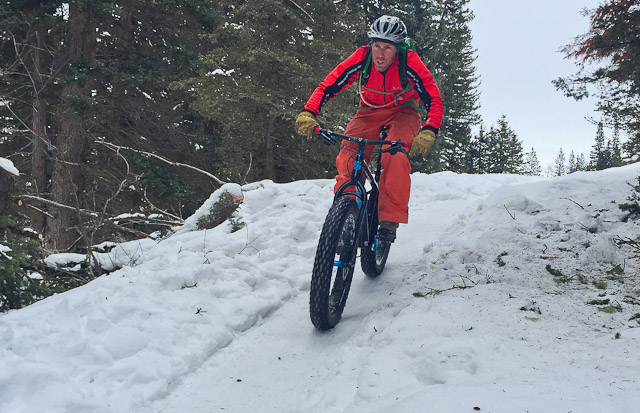 Originally developed for sand and snow use, you now see fat bikes all over in all seasons. I don’t really get this yet, but many people do. Ryan Dunfee photo.
Originally developed for sand and snow use, you now see fat bikes all over in all seasons. I don’t really get this yet, but many people do. Ryan Dunfee photo.
Fatbikes: Super wide 4-5” tires, lots of traction, slower rolling. Definitely a very different experience than pedaling a “normal” mountain bike, but some people are addicted.
Single Speed: take your beard, your neck tattoo, your ear-lobe rings and go back to Brooklyn. However, being on one will make you a fitter, better climber since you’ll be forced to stand constantly and hammer on that one gear.
FIGURING OUT WHAT BIKE IS FOR YOU:
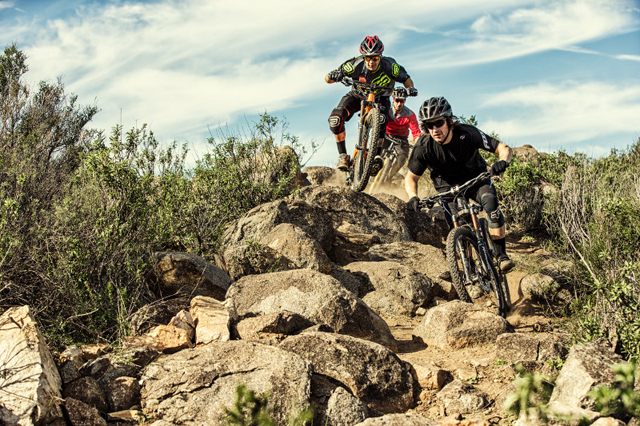 Make a bell curve of all the types of riding you do, and cater your bike to the largest part of that curve. GT/Jake Hamm photo.
Make a bell curve of all the types of riding you do, and cater your bike to the largest part of that curve. GT/Jake Hamm photo.
What’s the best way for a customer to begin to assess who they are and what might be the right bike for them?
Chris Kelley, Owner, Topanga Creek Bicycles: There’s no set checklist of questions, really, but ask yourself what are you going to ride–commuter trails, races, trail rides, DH parks. Also ask yourself what might make you feel “comfortable.” If you have some back issues, you might want full suspension, or perhaps you’re a former roadie who feels more at home on a rigid hardtail.
Mike Ahearn, Ridgefield Bicycle Company: I like to think of defining a bell curve of what you’re going to do, and aiming for the fattest part of that. What do you do most and where on either end does it start to taper off? Adjust the curve for things you might want to try or regional terrain.
Travis Ott, Global MTB Brand Manager, Trek Bikes: Test ride! Visit one of the trailhead demos Trek and others offer. All the self-delusion quickly falls away when you have to turn the pedals. That 160 mm travel bike looks bitchin’, but you might realize you never maxed out the 140 mm demo bike you rode. That’d be an important realization.
Chris Hopwood, Global Marketing Manager, GT Bikes: What’s going to allow you to have the most fun? You know the number one reason people don’t ride their bikes? Because they’re not comfortable. If all your buddies are buying 29’er hardtails and you go out and buy a 160 mm travel bike and you go out riding with them, you’re not going to have a good time. It’s a fun factor thing–it’s all about having fun.
Thomas McDaniel, Product Marketing Manager, BMC Bikes: Buy what makes you happy, but know that bikes perform their best when ridden the way the engineers designed them to be ridden. This is tough to answer without dissecting the terrain–good retailers will be asking lots of questions, and the best shops make the best decisions, and can help riders understand limitations so expectations don’t get out of hand.
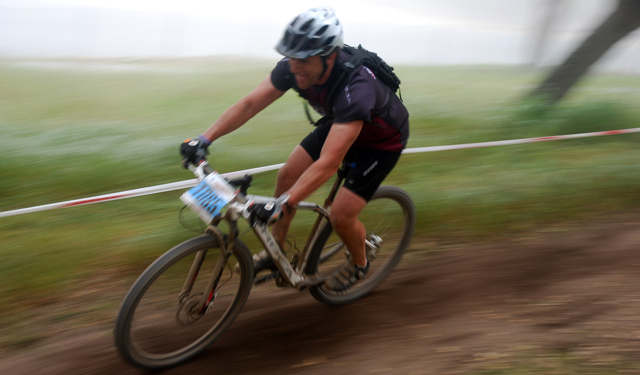 Figure out what bike is right for you and buy what makes you happy. Scottie Pendleton Photo
Figure out what bike is right for you and buy what makes you happy. Scottie Pendleton Photo
Any tips to buying strategy, buy good frame, save on parts and ride the crap out of it? Build it from scratch? Focus on parts spec?
Travis Ott: It’s hard to beat the value of a complete bike. You get a lot of performance for your dollar these days. You also save yourself the headache of mistakenly ordering an incompatible part. We see the used bike market continually growing which makes me think more people are riding a bike for a season or two, selling the whole thing and putting that towards a new complete bike.
Thomas McDaniel: Buy from brick-and-mortar retailers. These retailers have to know the product and have to be able to deliver the right bike for the right rider, or risk losing business. They’ve got more skin in the game and because of that, and are more likely to get it right.
Chris Hopwood: BE COMFORTABLE. You’re going to be happiest and ride the best on the bike you’re most comfortable on.
Scott Vogelmann, Sr. Product Manager MTB Cannondale: It’s a great time to be a consumer in the bike world. You’re going to be stoked in six months if you spend that extra couple hundred bucks because you ate peanut butter for a few weeks.
Is there a way to get a start on what bikes in any one (or many) shops might be best for you or your region?
Chris Kelley: What you ride right now, and knowing what you like or dislike about it, is a great starting point. This is something people usually share first.
Thomas McDaniel: If that bike you were on made you smile, of course [it’s a great way to start]. Same if that bike didn’t make you smile. Your old bike can be some of the best information you can have to learn about yourself as a rider. There are riders out there who struggle to identify their strengths and weaknesses and what they really want, but being able to walk in to a shop and say “here’s the old bike–I like this and hated this” can really help a retailer hit the target for that new bike.
Mike Ahearn: Your old bike is good. For clarity; You don’t have to actually bring the old bike in, we’ll probably know what it is–but yes, at the shop let’s talk about that bike and how you feel.
Thomas McDaniel: We make bikes that address the different types of riding, that are versatile enough that a slight tweak of shock tune, tire dimension, or handlebar spec totally hits the rider’s preferences. We don’t really do region-specific lines.
Chris Kelley: XC bikes with short suspension work great around here (Santa Monica Mountains, Southern California) because they are suited to the local trails so we’ll naturally sell a lot of those. I feel like our shop is a bit niche, and people usually find us because of a bit of research they’ve done on bikepacking, fatbikes or the like.
Todd Seplavy, Dir. Of Product Management GT: There’s no place that’s going to carry 100% of a company’s global line, they [The stores] are going to whittle it down to what works for their region and their shop.
Chris Hopwood: There are regional drivesr for specifications, some places like SRAM, some like Shimano. But don’t let shops just sell you what they have and don’t be afraid to walk out if you’re not feeling like you’re getting what you want.
Travis Ott:Country markets choose what products they carry. Country managers and forecasting decide what those models are.
Todd Seplavy: You can talk to “That guy” in the office. There’s always one guy who’s an expert in X, Y or Z. Pick his brain and see what direction he points you in. Start talking to people around the trails, at bike shops (sure they want to sell you stuff, but they want you to be a repeat customer).
Any tips or ways for buyers be honest with themselves when self-assessing?
Mike Ahearn: I like to suggest a good strategy of buying a bike that addresses your weak points. If you’re already beating your buddies up the hill, then maybe think about something that helps you on the descents. Ask yourself “What problem am I trying to solve?” That doesn’t work if you’re buying your first bike, or are buying an additional bike for a specific purpose, but for a large portion of developing riders, it’s something to think about.
Chris Hopwood: Ask: 1) what type of riding are you going to do, 2) what do your friends ride, 3) what type of bike do you have now, 4) what other sports do you do. Am I an addict for this sport, or is MTB secondary to skiing or golf? Do I love screaming downhill or going fast on the road? You can slide your decision based on your personality. Also, region; if you’re from Bellingham, Washington, your idea of a “trail” bike is going to be more burly than one from Connecticut.
 You might like the idea of gettin' all cowboy on a full-bred enduro bike, but does your riding really require one? Trek photo.
You might like the idea of gettin' all cowboy on a full-bred enduro bike, but does your riding really require one? Trek photo.
Todd Seplavy: If you’re only going to ride on Long Island, just get a hardtail.
Mike Ahearn: Be aware of what you want–but watch out for that magic bike that has hit a home run this season. Every year, there are a few bikes that just have that magic mix of stuff that makes them superior. Not always higher price, but the right combination of wheel size, rear travel, front travel, head angle or whatever that sets it apart. Keep your ears open when talking to the shop or salesperson for this–it might be worth going outside a few preconceived notions to look at it.
Scott Vogelmann: Don’t buy the bike for the one race you’re going to do, buy it for the everyday ride you’re going to do.
Todd Seplavy: Identify what you’re going to be doing with this. Really. Be honest with yourself, who are you? If you’re in Connecticut, invest in what you’re most likely going to do with it. If you might visit a DH park, then demo a bike the two or three times you go to Mountain Creek’s bike park. But don’t buy a bike for those two days. Also, don’t shoot too low.
Chris Kelley: Know your measurements, that helps during purchase. Height, inseam, arm length. And trust us to fit you. We want you to be on the right bike.
Thomas McDaniel: “Buy what you can afford to maintain” is what I say-if you don’t want to pay the premium of a replacement XTR cassette and chain, why buy it in the first place? If you’ve got the bank, ride top-level components and top-level frames… if you’re on a budget, keep evolving the machine until it’s exactly what you dreamed it could be.
Todd Spelavy: (Talking about Women’s bikes, but relevant to all) Key custom touchpoints: handlebar width, saddle, stem lengths, reach, brake levers and grips are really key drivers. Those have to fit.
Scott Vogelmann: It’s most important for women to get good answers to these same questions about where you ride, because many shops can be less accommodating to women.
Todd Seplavy: REI as a retailer represents a disproportionate amount of women’s bike sales because they know how to sell to women. Most shops are too Dudesmash.
Scott Vogelmann: Dudesmash?
Todd Seplavy: Dudesmash. It’s a Bro-space.
How do you guys collect information to design and evolve bikes that are right for average riders?
Todd Seplavy: We get a lot of info from the “bros in the knows” I have on Facebook or on Skype. I ask them what they like, what’s new and what did they just get. I also go to the trailhead, hand out waterbottles, and talk to people about what they like.
Scott Vogelmann: Absolutely, I go talk to people out in the field all the time. Over beers at a festival, or even open feedback channel from shops. People should do that.
Todd Seplavy: There are key regions that are indicators for certain lines. Pacific Northwest is a great example. They organically share information that we may incorporate for our lines that speak to those areas [freeride and all-mountain bikes] I learned a lot from a Pacific Northwest guy at Sea Otter.
Chris Hopwood: I hate the forums. “the freaking marketing guys.. this is just marketing…”
Todd Seplavy: Yeah, the influence of the forums has kind of backed off. Figuring out who’s credible or who’s keen and insightful can be hard. Internet bravado has gotten to be an artform.
RELATED: 5 tips for getting the most mountain bike for your money
Todd Seplavy: We get so much helpful information out of our pro mechanics. We'll hear “It’s hard to get a tool into this area" or “This part or bearing wears out too fast.”
Scott Vogelmann: I also ask myself when designing a bike, what’s a major problem I’m trying to solve, what makes somebody angry that I can fix?
Travis Ott: Trek does a lot of competitive benchmarking, a lot of personal and group ride evaluation, a lot of shop visits.
What’s the best time to buy?
Travis Ott: Best time to buy a new bike? Now! The rate of progress and change is dizzying. There is always something trickling down. And there will always be something brand new yet to trickle down. Let’s be honest: these are adult toys. Getting new toys is fun. I work at a bike company surrounded by bikes, and I’m over the moon when I get to ride a new or different bike.
Scott Vogelmann: Now, but if you can hold out just a couple weeks and save a few hundred extra, that will pay off. You will be so psyched in six months.
Todd Seplavy: And make sure you keep enough saved on the side for a decent pair of shorts and a rack, to keep the whole experience happy.
CONCLUSION
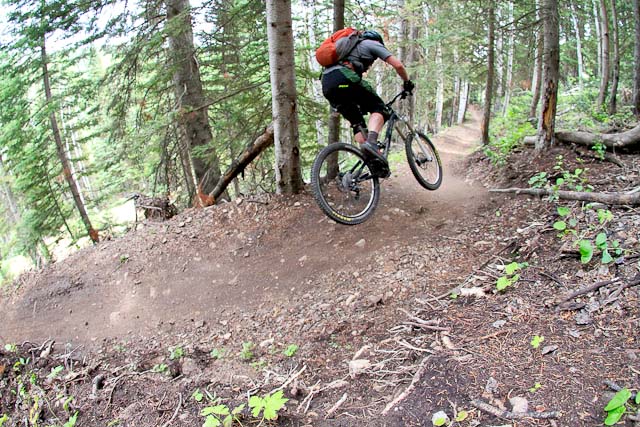 Self-assess, test ride, and find a good shop to help you out. Ryan Dunfee photo.
Self-assess, test ride, and find a good shop to help you out. Ryan Dunfee photo.
Self assess. Ask yourself who you are and what you might like to ride. Take note of your own unique details: roadie, speed-demon, skier, bad back, etc. Do some homework on what sort of trails are around you. Do you live in Kansas, the Pacific Northwest, South Carolina, Sothern California or New England? What do folks ride around there?
Test ride–and then test ride some more, theory can only take you so far. While you ride, pay attention to what works for you, what plays to your strengths, and what helps your weaknesses. Ask yourself if there’s anything you might want to try, like an XC race or an enduro race, or a bike trip to someplace–take that into account when building your bell-curve.
Find a good bike shop. Don’t buy from someone unless you have 100% confidence they are focused on your needs and are putting you on the right ride (awards like The National Bicycle Dealers Association "America's Best Bike Shop" don't hurt). Listen to what they have to say. Resist the dudesmash. If you can do a shop ride on one of their demos, that’s a good idea. Don’t be afraid to go out and try that bike that you’ve been reading a ton of good press about.
Don’t buy too quickly. It’ll give you a chance to save up for the next level, as well as make sure you’ve done all your homework. Ask your friends, that guy in the office, or some respectable online forums for guidance (keep questions clear, simple and walk away if the conversation spirals into the ridiculous).
Translate all this information into some of the categories, travel lengths and wheel sizes above so you can arm yourself with that knowledge. Find a few dealers from manufacturers' websites or Yelp that carry models that might fit and visit them. You’re buying for the long term, but know that there will be some ongoing costs.
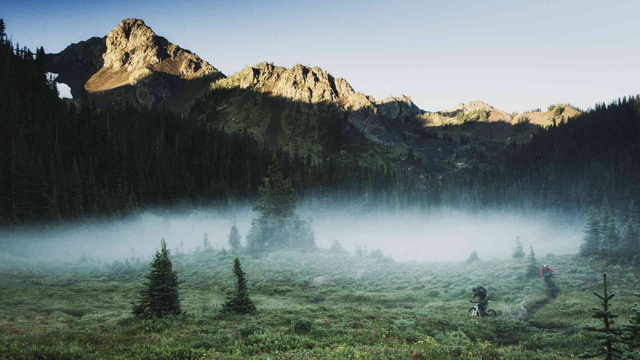
Check out their bikes (keepin’ it alphabetical, yo) and look for their demo days at:
BMC Bikes
GTBikes
Cannondale
Ridgefield Bicycle Co
Topanga Creek Bikes
Trek Bikes




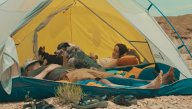

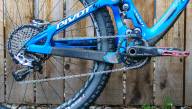



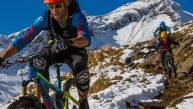
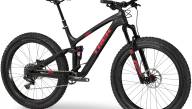




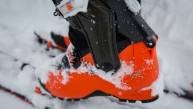


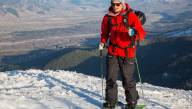



JohnBoy
May 18th, 2015
Great article and practical advice. This covers an enormous range of information.
Personally, I believe that your bike is technologically obsolete every 3-5 years. So even if it ain’t broke you will need to get a new one if you want to keep up with your buddies.
In addition, I haven’t seen anyone buy a 26er for 2 years or so. The advantages of the 27.5 and 29 wheel sizes are just too big.
Finally, my view is that all of the major brands have great bikes in the same category and wheel size. Pretty much, they are all about 90% similar. The only difference is the last 10% of variation. So figure out the type of bike that would best fit what you ride, decide on the wheel size and pick any good bike…you can’t go wrong.
me4326
May 9th, 2017
Why do you not have Ellsworth listed in your bike selection?
Gunnar Waldman
May 9th, 2017
I don’t know that much about them. I hear their latest stuff is good, but I don’t have much to go on other than a few industry articles. TGR has reached out to them but they’re a small company and not able to respond to everyone, I’m sure.
Francis Chapman
May 22nd, 2018
Perhaps you can consider adding Morpheus Bikes in your future lists and roundups. I do not know much about the technical aspects of their bikes, but I own one. And I am quite certain that they exceed expectations.
Francis Chapman
May 22nd, 2018
When choosing a mountain bike, I believe that comfort and price are the primary factors we should consider. Before I finally made up my mind and got this bike: https://www.morpheusbikes.com/product-page/conspiracy-premiun-build, I asked for a test drive first, though it sounded odd. I did not want to regret my decision.